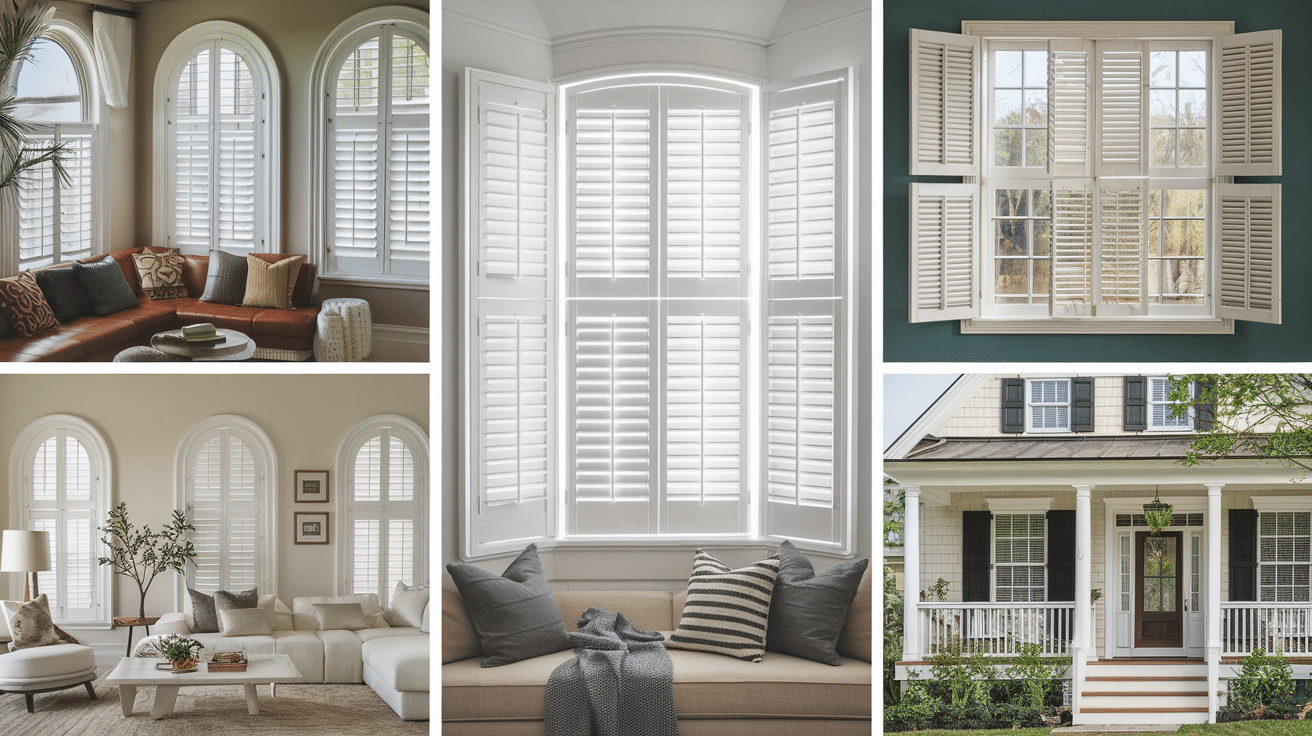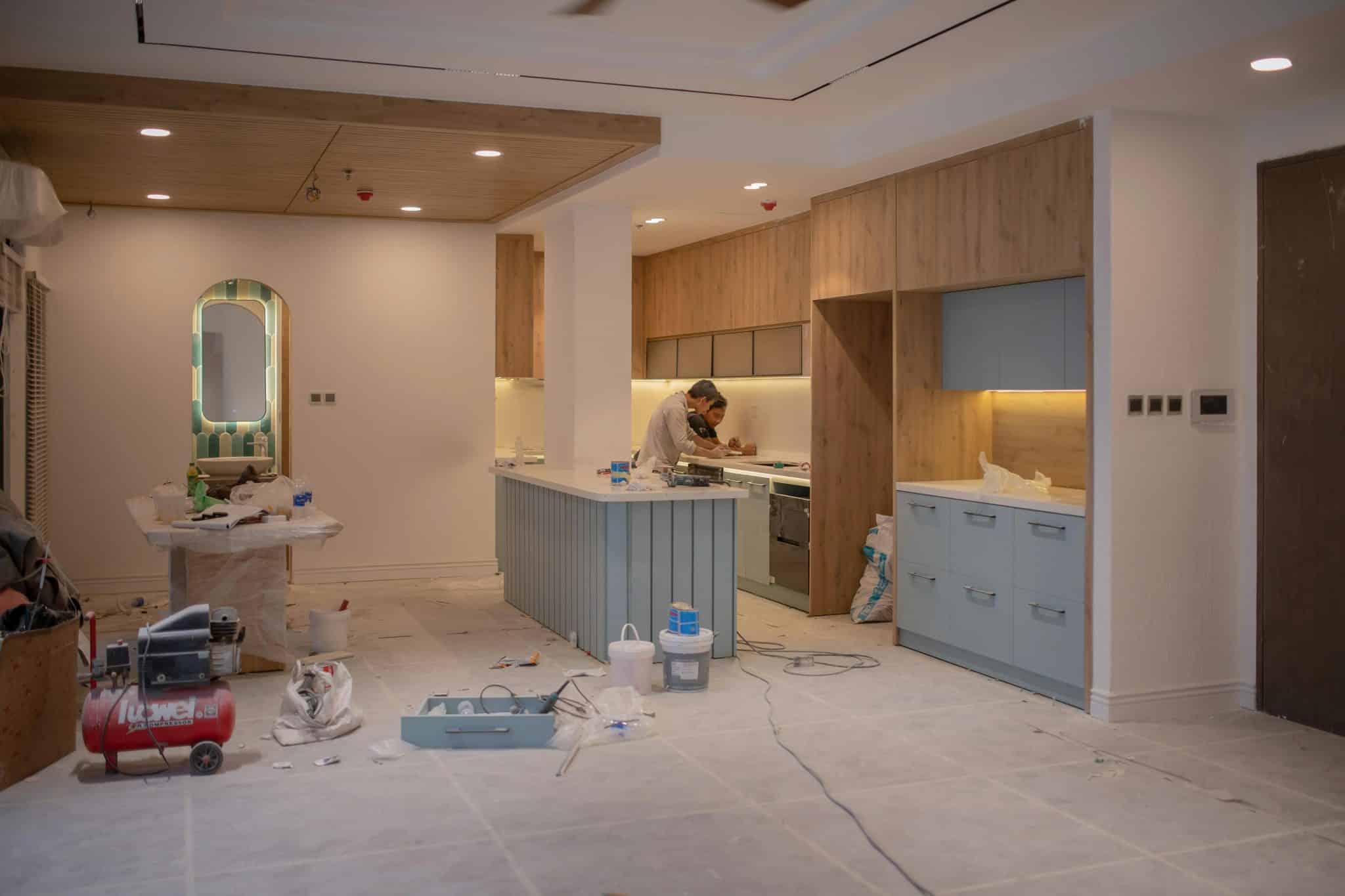Your home’s appearance starts with its windows. Shutters add warmth and style to any house, making them a key part of home design. When you make your shutters, you get exactly what you want at a lower cost.
These window additions come in many styles. You can choose from traditional board-and-batten designs, classic louvered patterns, or simple raised panel options. Each style adds charm to your home’s appearance.
By creating your shutters, you control every detail—from size and shape to color and finish. This guide will show you how to choose and build the right shutters for your windows.
You’ll learn about materials, tools, and step-by-step methods for making perfect shutters.
Project Materials and Tools Checklist
| Category | Item | Purpose |
|---|---|---|
| Materials | Wood | Main construction material |
| Screws (various sizes) | Primary fasteners for assembly | |
| Nails | Secondary fasteners for lightweight components | |
| Hinges | For movable parts and doors | |
| Paint/Stain | Surface finishing and protection | |
| Fabric (optional) | For upholstery or decorative elements | |
| Thread | For securing fabric components | |
| Tools | Saw (power or hand) | Cutting wood to size |
| Electric Drill | Creating pilot holes and driving screws | |
| Measuring Tape | Ensuring accurate measurements | |
| Hammer | Driving nails and general assembly | |
| Screwdriver Set | Manual screw installation and adjustments | |
| Sewing Needle | Fabric work and upholstery | |
| Paintbrush/Foam Brush | Applying finish | |
| Wood Glue | Reinforcing joints | |
| Additional Essentials | Sandpaper (various grits) | Surface preparation and finishing |
| Clamps | Holding pieces while the glue dries | |
| Work Surface/Bench | Stable platform for construction |
Step-by-Step DIY Process for Making Shutters
Many homeowners want custom shutters but worry about the cost. However, making your shutters can save money and give you exactly what you want.
This guide will show you how to build beautiful, lasting shutters for your windows.
Step 1: Measure and Prepare the Window Frame
Start by getting exact measurements of your window frame. Use a metal tape measure and write down:
- The total height of the window
- The width from edge to edge
- The depth of the frame
Double-check all measurements before buying materials. Small mistakes here can cause problems later.
Step 2: Cut the Wood for the Shutters
Choose your wood type based on these factors:
| Wood Type | Best For | Key Benefits |
|---|---|---|
| Pine | Indoor shutters | Affordable, lightweight, easy to work with |
| Cedar | Outdoor shutters | Resistant to weather, moisture, and pests |
| Oak | Long-term value, heavy-duty shutters | Strong, durable, and long-lasting |
To cut the wood:
- Mark your measurements on the wood pieces
- Use a saw to cut the frame pieces first
- Cut the slats to match your window height
- Make all cuts straight and clean
Always check your cuts before moving forward.
Step 3: Assemble the Shutters
Setting up your frame assembly correctly is crucial for a sturdy final product. Start by arranging your frame pieces on a level work surface, ensuring all components are within easy reach.
Once the frame outline is positioned, carefully place the slats within the boundaries, spacing them evenly. This attention to spacing will significantly improve both appearance and functionality.
Before securing anything permanently, grab your level to verify that all pieces are properly aligned, as any misalignment now will cause problems later. When you’re confident everything is positioned correctly, secure the assembly using either wood screws or nails, depending on your preference and the specific requirements of your project.
Step 4: Sand and Smooth the Edges
Creating beautifully smooth shutters is all about taking your time with the sanding process. Begin by tackling the rough surfaces with coarse-grit sandpaper in the 60-80 range, which helps remove any major imperfections and old finishes.
Once you’ve established an even surface, switch to medium-grit sandpaper between 120 and 150, continuing to work toward the wood grain to refine the texture. Make a final pass with 220-grit sandpaper for that professional finish, being especially mindful of corners and edges, where splinters often hide.
Throughout the process, remember to run your hand over the surface to feel for any remaining rough spots—your fingers are often better than your eyes at detecting imperfections. Always clear away dust between grits with a tack cloth or vacuum, as leftover particles can scratch the wood.
Give extra attention to those corners and edges people will most likely touch. This isn’t just about looks; it’s about making your shutters beautiful and safe to handle.
Step 5: Painting or Staining the Shutters
Before painting or staining, clean all surfaces, fill any holes with wood filler, and let them dry completely.
For painting:
- Apply primer first
- Use exterior paint for outdoor shutters
- Put on thin, even coats
- Wait for each coat to dry
- Add a second coat for better coverage
For staining:
- Test the stain on scrap wood
- Apply with steady strokes
- Wipe off excess quickly
- Let dry between coats
- Add a clear coat for protection
Step 6: Attaching Hinges and Hardware
Select the right hardware:
| Hardware | Recommendation | Reason |
|---|---|---|
| Hinges | Choose hinges that match the shutter weight | Ensures proper support and durability |
| Screws | Pick screws designed for outdoor use | Resists rust and corrosion, ideal for outdoor environments |
| Number of Hinges | Use three hinges per shutter for stability |
It provides better balance and prevents sagging |
Video Tutorial
You can watch a detailed video of DIY Woven Wood Window Shades Hack by Colleen Pastoor-
Maintenance and Care for Your DIY Shutters
Regular Cleaning and Dusting
Your shutters need basic care to stay in good shape. Start by wiping them with a soft cloth each week. For tougher dirt, use a damp cloth, but immediately dry the wood.
Check the hinges once a month and tighten any loose screws. Stay away from strong cleaners that might hurt the wood.
Cleaning both the front and back requires a gentle touch. Make sure to reach all the corners and remove any cobwebs.
Seasonal Maintenance
Your shutters need different care each season. Look at them often for signs of problems and fix small issues before they grow.
In winter, keep ice and snow away from the wood. Summer calls for more frequent cleaning due to dust and pollen. Watch out for paint that starts to peel or crack.
You should add a fresh coat of paint or stain every three to five years. When you do this, take the shutters down for a good cleaning.
New seals or weather stripping might also help at this time. These steps help your shutters last longer and work well year after year.
Types of Shutters for Your Home
1. Plantation Shutters
Plantation shutters bring a classic style to any room. Their wide slats let in plenty of light. You can make them at home using basic materials like pine or cedar.
The wide slats need careful spacing and strong hinges to work well. When making these, focus on the clean lines and even gaps between slats. This style works well in both living rooms and bedrooms.
2. Louvered Shutters
Louvered shutters help you control light in any room. The slats move up and down to adjust sunlight and airflow. Making these takes time but offers great results.
Start with thin wood slats and a strong frame. Set up a system of rods to move all the slats simultaneously. Test the movement often during construction to ensure smooth operation.
3. Board and Batten Shutters
Board-and-batten shutters, which use straight boards held together with cross pieces, are well-suited for country homes. Their simple design makes them perfect for beginners.
Use thick boards for the main panels and thinner ones for the cross pieces. This style works best with outdoor mounting. Paint the boards with solid colors to match your home’s trim.
4. Shaker-Style Shutters
Shaker-style shutters are simple and neat. They use flat panels with clean edges and no extra details. These are made with smooth wood panels and basic frames.
Focus on straight cuts and tight joints. These shutters work well with modern home styles. Keep the design basic and the lines straight.
5. Café-Style Shutters
Café-style shutters cover just part of your window. They work great in kitchens and breakfast nooks. Build them shorter than regular shutters but use the same methods.
Mount them on the lower half of the windows for privacy. This style lets light in from above while keeping the lower area private. Use stable hardware since these open often.
Styling Ideas for Shutters in Your Home
1. Pairing Shutters with Other Window Treatments
Your windows can look better with the right mix of shutters and other coverings. Pick light curtains that work with wooden shutters for a softer look. Try these proven combinations:
- Sheer curtains with full shutters
- Light valances over shutter tops
- Roman shades above café shutters
- Side panels next to plantation shutters
- Simple blinds with half shutters
2. Choosing Shutter Colors
Pick shutter colors that match your room’s style. White shutters fit most color plans and make rooms feel open. Dark wood tones bring warmth to living spaces. Black shutters make a strong statement in modern rooms. Consider these tips for color choice:
- Test paint samples in your space
- Look at colors in different lights
- Match or contrast with wall colors
- Think about your furniture tones
- Consider your room’s lighting
3. Adding Accents to Enhance the Look
Small touches can make your shutters look even better. Place small plants on window sills to add natural beauty. Install small lights to highlight the window area. Change window decorations with the seasons to keep things fresh. Try these accent ideas:
- Hang light window boxes
- Add simple window film
- Place candles near windows
- Use small decorative hooks
- Set up window seat cushions
Conclusion
Making your shutters adds style to your home while keeping money in your pocket. The process takes time and care, but the results make it worthwhile.
Your DIY abilities allow you to change ordinary wood into stunning windows perfectly suited for your home. This guide will help you create shutters that meet your specific requirements.
Each step matters – from careful measuring to the final coat of paint. Good maintenance will help your work last for years to come.
Ready to start? Take time to plan, gather your tools, and work step by step.
The satisfaction of seeing your handmade shutters on your windows will make you glad you chose the DIY path.













